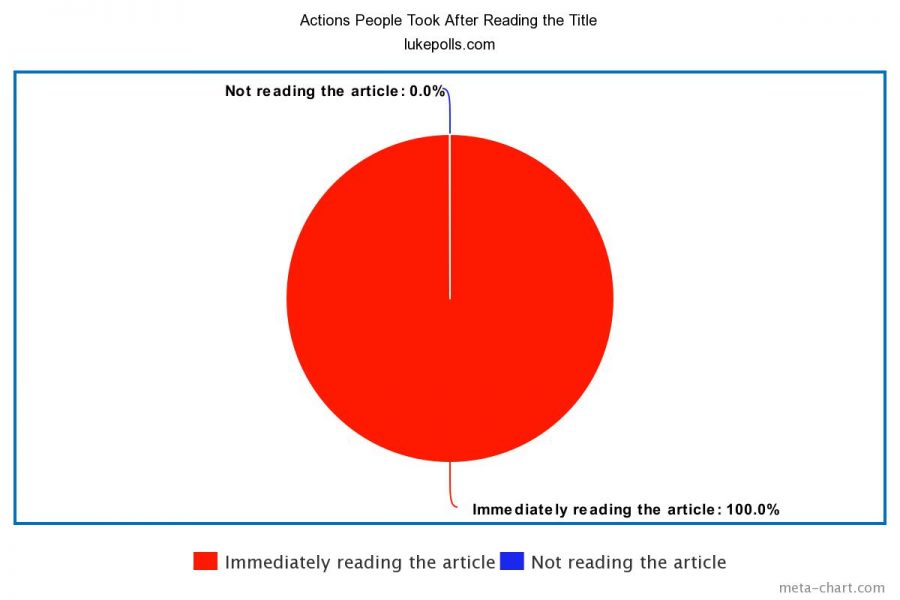Study: 100% of People who Read This Title will Read the Article
February 28, 2020
Harvard University has just released a groundbreaking study that found that 100% of people who read this article’s title will read the article itself. The study was taken last year with a group of 1,000 people within the state of Massachusetts. When given the title of the article, all of the participants immediately clicked on the article to read it.
“This truly is some amazing information we have uncovered,” said Professor John Hinkleberry. “Not only has this study uncovered some secrets about the human mind, but it betters our understanding of the Universe.”
The 65-year old Hinkleberry has been a professor at Harvard University for seventeen years now. Previously, Hinkleberry had tried to uncover the secret of Obama’s last name, however with no avail. This left him rather depressed, but his happiness soon returned when he tackled this experiment.
“I truly felt like the lowest of the low when my labor proved fruitless when trying to uncover Obama’s last name,” Hinkleberry explained. “My wife,” he continued, “had taken the kids and the dog. She called me ‘obsessed’ and ‘crazy’ as she picked up Fido’s food bowl. Oh poor, poor Fido.” Hinkleberry burst into tears and we promptly took five.
The five-minute break had passed and Hinkleberry had not stopped crying. Another ten minutes passed, and it soon became apparent that Hinkleberry’s crying would not stop. So, we left to continue our studies elsewhere.
The world had brought us to the United Kingdom where we met up with Oliver Aaron, a teacher who had conducted a similar experiment. “Uh, yeah, we did that experiment and stuff,” Aaron reported in a thick Irish accent. “However, we did it in reverse. We had about five hundred victi- I mean experimenters read the article first, and then see if they would read the title.”
Aaron went on to explain that the results of his experiment were very similar to the results of Hinkleberry’s. Aaron remarked, “Luck of the Irish,” with no other context besides that. We congratulated Aaron and went on our merry way.
Our team had thought we had discovered enough information on this study, but we were suddenly contacted by an anthropologist: Joan Joanne.
Joanne flew us to Central Europe where a team of ten anthropologists, including Joanne, found paleolithic cave paintings that seem to replicate Hinkleberry’s and Aaron’s experiments.
“Wow, this is amazing,” I said trying to sound interested. Joanne gave me a tour of the cave and it’s many ancient paintings. Many ancient rituals were represented such as farming, fishing, and tax fraud. Although, the main attraction was much further down the cave.
After an hour of walking, climbing, and not trying to fall into wide crevices that would surely kill us, we finally reached the paintings Joanne was talking about. Before our very eyes, we reached perhaps one of the oldest studies ever conducted.

The paintings displayed multiple animals, thought to represent the articles title, a book-shaped object that surely would represent the aforementioned article, and a hand slowly reaching the book-shaped object. Surely, this is the ancient equivalent of Hinkleberry’s and Aaron’s studies. We marveled in it’s sight for a long time–but not really because it was super boring. When Joanne had her back turned, we ran out of the cave and immediately to the airport.
At the time of writing this article, I have already retired back home to gather my story. Through this amazing story, I met a broken professor, a curious Irishman, and a cave full of bore. I learned many life lessons, but perhaps the most important one I learned is: this whole thing was a giant waste of time.





